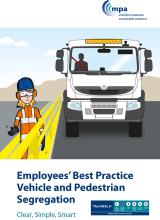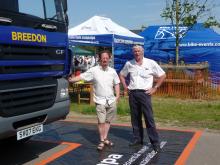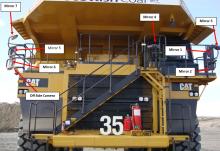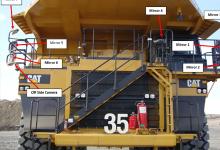Spillard Safety Systems is stepping up its campaign saying that more needs to be done to increase safety on mining and quarrying sites.
As part of a newly-expanded education and training programme, the company will be taking part in a series of safety events later this year including a Mineral Products Association (MPA) safety day, and a safety week organised by
“Technology alone is not enough to ensure the safety of people exposed to the dangers of limited visibility and blind spots on machines and vehicles,” says managing director Pete Spillard. “The industry knows only too well the tragic human effects, financial impact and reputational damage that have resulted from serious accidents in the past. But we’re still seeing too many accident and fatalities on construction, mining and quarrying sites. And as well as equipping operators with the right on-board technology to improve all-round plant visibility, an important part of the answer is educating all of the people who work on site about visibility risks and how to avoid them.”
One of the events where Spillard will be raising these issues and advancing some practical answers will be the MPA Midlands Health and Safety Day in the city of Leicester, England, on 18 October. Hosted by
Spillard will also be taking part in the Tarmac Northern and Scotland Areas’ Safety Week at the Tarmac Barrasford Quarry, County Northumberland, northern England, from 17-21 September, 2012.
The focus of this event will include behavioural safety, workshop safety and housekeeping, and working at height. Spillard will be discussing visibility issues relating to blind spots and small vehicle segregation.
The company has been closely connected with efforts to improve site safety and visibility since it started in 1992, and among its latest products is the Optronics ASL360, which it claims is the the world’s first 360º surround view camera system for industrial and commercial vehicles.
“We’re very serious about this education and training programme, and totally committed to it,” sys Pete Spillard. “We need to get through to everyone from quarry operatives to maintenance people who may have operated a fork lift, but remain unaware of the different level of risk presented by a 100tonne dump truck.
“Experience has shown that many people still assume they can be seen by an operator sitting up high on a machine, and that there are no blind spots. In many cases that simply isn’t true. We’re now looking at new ways we can help to get the message across and help to save lives: everything from posters to smart phone apps.”









